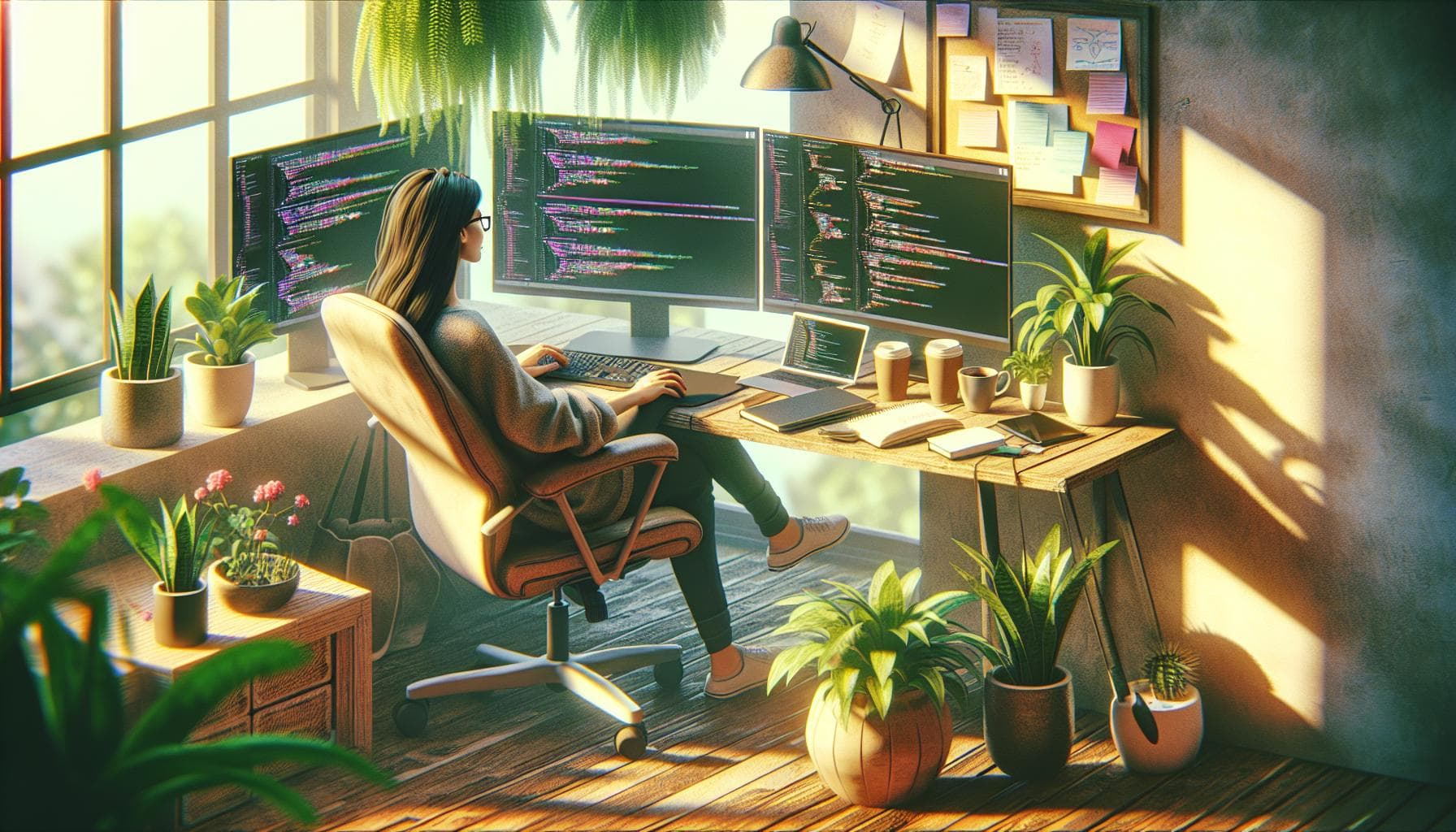As a software developer, you're no stranger to long hours, tight deadlines, and the constant pressure to keep up with new technologies. This relentless pace can lead to burnout, a state of chronic stress that leads to physical and emotional exhaustion, cynicism, and feelings of reduced professional ability. But fear not, there are ways to keep the flames of passion for coding alive without burning the candle at both ends. Let's delve into the strategies that can help you maintain your well-being and love for development.
Understanding Burnout
What is Burnout?
Burnout is a psychological term that refers to the experience of long-term exhaustion and diminished interest in work. For developers, it can manifest as a lack of enthusiasm for coding, a drop in performance, or even dread at the thought of booting up the computer.
Signs and Symptoms of Developer Burnout
Key symptoms include chronic fatigue, detachment from one's work, feelings of ineffectiveness, and reduced productivity. If you find yourself dreading work, feeling cynical about your projects, or struggling to concentrate, you may be experiencing burnout.
The Importance of Work-Life Balance
The Role of Work-Life Balance in Preventing Burnout
Balancing work with personal life is crucial for preventing burnout. It ensures that you have enough time to recharge, pursue hobbies, and spend time with loved ones, which can all contribute to a more fulfilling life.
Challenges to Achieving Balance in Tech
The tech industry is notorious for its 'always-on' culture, which can make it difficult to disconnect. However, setting clear boundaries between work and personal life is essential for long-term health and career sustainability.
Setting Boundaries to Prevent Burnout
Learning to Say No
One of the most effective ways to protect your time and energy is to get comfortable with saying no to extra commitments that don't align with your priorities or capacity.
Managing Work Hours and Breaks
Establish a routine that includes fixed working hours and regular breaks. Use your breaks to step away from your computer and engage in activities that refresh you.
Embracing Productive Work Habits
Prioritization and Time Management
Learn to identify the most important tasks and allocate your time accordingly. Avoid the trap of busywork and focus on what truly moves the needle.
The Pomodoro Technique and Other Productivity Methods
Techniques like the Pomodoro Technique can help you work in focused bursts with short breaks in between, reducing the risk of burnout by preventing prolonged periods of stress.
The Role of Physical Health in Avoiding Burnout
Exercise as a Burnout Antidote
Regular physical activity is a proven stress reliever. It doesn't have to be intense; even a daily walk can make a significant difference in your mental health.
Nutrition and Sleep Hygiene
Eating well and getting enough sleep are foundational to managing stress. Prioritize these aspects of your health to ensure you have the energy and resilience to tackle your work.
Mental Wellness Practices
Mindfulness and Stress Reduction
Incorporate mindfulness practices such as meditation or deep breathing exercises into your daily routine to help manage stress levels.
Hobbies and Creative Outlets
Engage in non-work-related activities that bring you joy and allow your mind to rest and recover from the demands of coding.
Social Support and Community
The Importance of Socializing
Don't underestimate the power of social interaction. Make time for friends and family, and don't hesitate to share your experiences with them.
Finding Support in the Tech Community
Connect with fellow developers who understand the unique pressures of the industry. Join forums, attend meetups, or participate in online communities for shared support and advice.
Recognizing When to Seek Professional Help
Identifying the Need for Professional Support
If you're struggling to manage burnout on your own, it may be time to seek help from a mental health professional who can provide tailored strategies and support.
Resources for Developers
There are many resources available, from counseling services to online communities, that cater specifically to the needs of developers facing burnout.
Conclusion
Burnout is a serious issue in the tech community, but with the right strategies and support, it can be prevented. By managing your work-life balance, setting boundaries, embracing healthy work habits, and taking care of your physical and mental health, you can continue to thrive in your career as a software developer.
FAQs
1. How can I tell if what I'm feeling is burnout or just regular stress?
Burnout is characterized by prolonged periods of stress that lead to feelings of exhaustion, cynicism, and a sense of ineffectiveness. If these feelings persist over time and begin to affect your work and personal life, it might be burnout.
2. Are there specific strategies for managing stress as a remote developer?
Yes, remote developers should establish a dedicated workspace, maintain regular work hours, and ensure they stay connected with colleagues and peers to combat the isolation that can come with remote work.
3. How often should I take breaks to avoid burnout?
It's recommended to take short breaks every hour to refresh your mind. Techniques like the Pomodoro Technique suggest a 5-minute break every 25 minutes of work.
4. Can changing my work environment help with burnout?
Yes, a change of scenery or reorganizing your workspace can provide a fresh perspective and reduce feelings of stagnation.
5. Is it okay to take a vacation if I'm feeling burned out?
Absolutely. Taking time off to disconnect and recharge is essential for preventing and recovering from burnout. It allows you to come back with renewed energy and focus.
